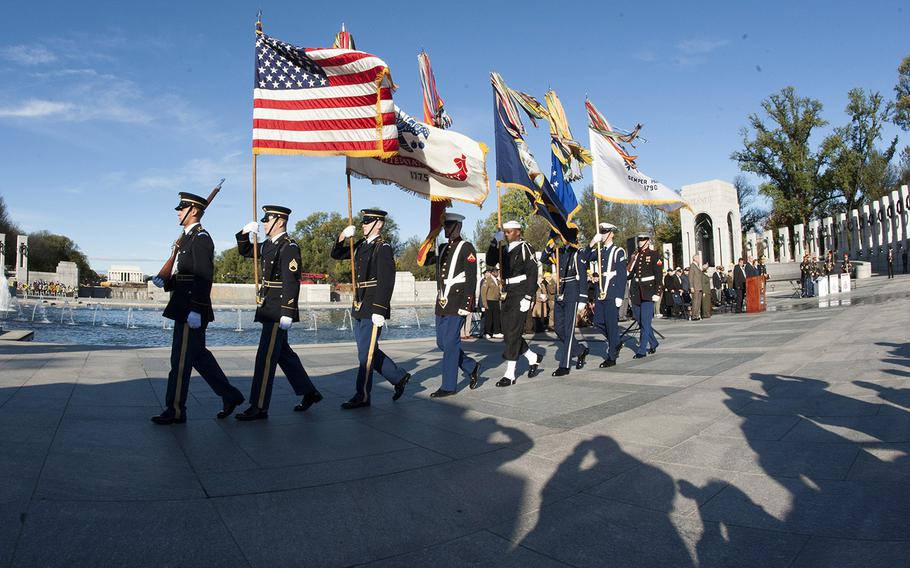
The Armed Forces Color Guard retires the colors after the playing of the national anthem to begin a Veterans Day ceremony at the National World War II Memorial in Washington, D.C., Nov. 11, 2015. (Joe Gromelski/Stars and Stripes)
Nov. 11 is the day set aside to honor the millions of Americans who have served their country in the Armed Forces, especially those who risked their lives in defense of the United States. Here are some facts about how the day came about and how it has been transformed over the years:
WHY WAS THE DATE CHOSEN?
In 1919, President Woodrow Wilson proclaimed Nov. 11 as “Armistice Day” to honor those who had died in World War I. The date was chosen to mark the armistice, or ceasefire, that had ended the fighting on Nov. 11, 1918. Wilson’s proclamation called for a day of parades and public meetings and a brief suspension of business starting at 11 a.m. -- the precise time when the fighting was to have stopped. The date was known officially as Armistice Day for the next 35 years.
WHEN DID IT BECOME VETERANS DAY?
After the end of World War II in 1945, a Navy veteran from Alabama named Raymond Weeks got the idea to transform Armistice Day into a day to honor all the nation’s military veterans, not only those who had died in World War I. Weeks pitched the idea to Gen. Dwight D. Eisenhower, the supreme Allied commander in Europe, and then organized the first National Veterans Day in Alabama in 1947. Weeks’ idea caught on, especially since World War II and the Korean War had created millions more American veterans. After Eisenhower became president, he officially changed the name from Armistice Day to Veterans Day in 1954.
WAS IT ALWAYS CELEBRATED ON NOV. 11?
In 1968, Congress moved Veterans Day commemorations from Nov. 11 to the fourth Monday in October. In all, the new law shifted commemorations for four national holidays _ George Washington’s Birthday, Memorial Day, Veterans Day and Columbus Day – to Mondays in order to create more three-day weekends, which supporters believed would encourage travel and tourism business. Changing Veterans Day, however, drew public outcry because of the historical significance of Nov. 11. In 1975, President Gerald R. Ford ordered Veterans Day restored to its original Nov, 11 date effective in 1978, regardless of the day of the week when it falls.